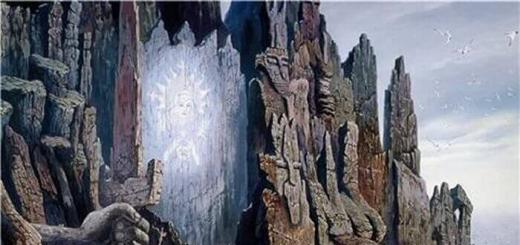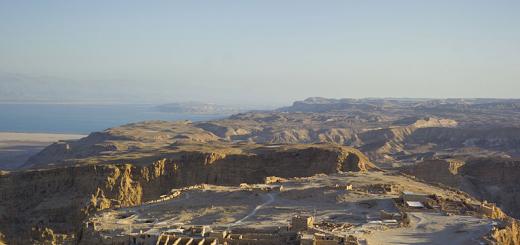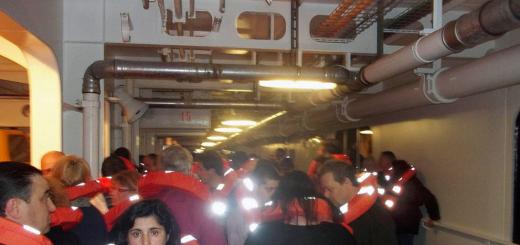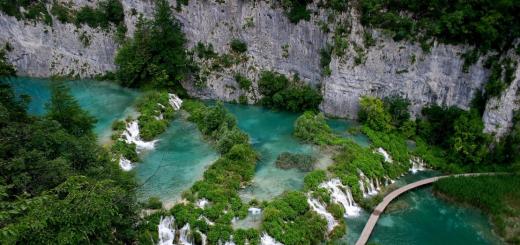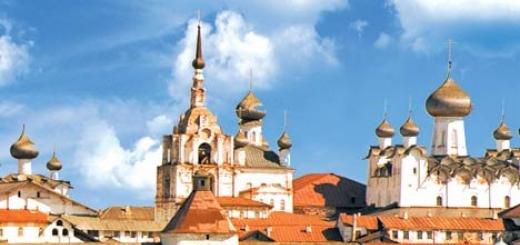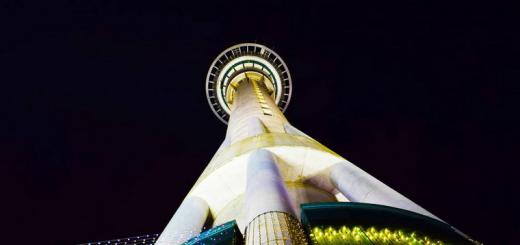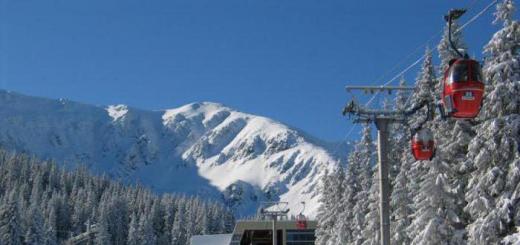On the turn XIV- XV centuries. Stefan Vasilyevich came to Moscow, whose son - Grigory - was nicknamed "Khovra", that is, unkempt, and the name of the area came from him.
In 1585, Khovrino belonged to the Tretyakovs, after which V.B. Sheremetev. Then the estate passed from hand to hand until it got into the Treasury. Peter I presented the village to F.A. Golovin, and from him Khovrino passed to his son Nikolai by inheritance and remained in the hands of the Golovins until his granddaughter Ekaterina Baryatinskaya sold the estate to N.P. Obolensky.
The manor ensemble with a park was built in the middle of the 18th century. The center of the composition was a wooden manor house, from the south-west a driveway led to it. On the opposite side of the house, the parterre descended to the bridge over the Likhoborka River. A wide alley on the other side of the river continued the main axis of the estate. IN World War II In 1812 the village was plundered and the estate burned down. In 1818 the village was divided between N.A. Stolypina and Colonel L.I. Zhemchuzhnikov. In 1859 P.L. Zhemchuzhnikov sells Khovrino to Moscow millionaire E.V. Molchanov, who breaks up a park in the estate, erects gazebos, grottoes, decorates a three-story house and builds several outbuildings. After his death, the widow in 1879 sold almost the entire estate to the merchant S.E. Panov. He sometimes dealt with criminals, often featured in scandals. Fires were not uncommon in the village, and in 1884 the estate burned down again.
In 1895, the estate was acquired by the merchant M.S. Grachev. In two years he put the estate in order: he cleared the park, renewed the outbuildings. In 1900, according to the project, the architect G.A. Kaiser built a palace that resembled a gambling house in Monte Carlo. The house in Khovrin owes this source to the active role of turrets and projections with complex roofs, scaly faceted domes with lucarnes, extensive use of sculpture and stucco molding in the exterior decoration. At the turn of the century, the bloom of the intelligentsia gathered in Khovrin: here K.V. Lemokh, V.A. Gilyarovsky, A. N. Tolstoy, V. Ya. Bryusov. After the revolution, a tuberculosis sanatorium for women was opened in the estate. Before the war, it was redesigned into a kumys hospital, and during the war there was a hospital for the seriously wounded. After the war, the Moscow Regional Physiotherapy Hospital was transferred to the estate.
Created at the beginning of the 19th century. the architectural ensemble has survived to this day. The main house and the kitchen wing connected to it with a gallery were erected on the site of the previous manor building. An outbuilding, a carriage shed and a stable form a utility yard, the location of which is associated with the previous composition of the ensemble. Now it houses the Moscow Regional Hospital for Rehabilitation.
The Grachevka estate in Khovrino is an architectural ensemble in the style of merchant eclecticism. Located on the territory of Grachevsky Park.
The name of the estate is associated with the name of its last owner - the merchant Mitrofan Grachev. He was a rich and ambitious man who built himself a real palace with turrets, statues, stucco moldings, verandas, and an abundance of colored glass.
The first noble estate in Khovrino appeared in the 15th century. At that time, these lands belonged to the famous boyar family of the Tretyakovs. At the beginning of the XVI century. The Tretyakovs sold the estate to the Counts Sheremetevs, then the estate changed its owner several times.

In the XVIII century. by order of the new owner, N.P. Obolensky, the estate was completely rebuilt, the park was ennobled in the English style. In the center architectural ensemble there is a large wooden house, similar to a Russian tower. Well-groomed paths led to the house on all sides.
In 1812, a fire destroyed most of the buildings of the Khovrinskaya estate, including the manor house. From that moment on, endless resale of the site began, which ended in 1895, when Mitrofan Grachev paid a very large sum for it at that time. This is how it began new life estates in Khovrino.

For the construction of the new manor house, Grachev hired the most talented architects - L. Kekushev and G. Kaiser. The work was completed in 1900, but the merchant was not destined to see his house in its finished form: Mitrofan died in 1899.
The main feature of the main house of the Grachevka estate is that it is very similar to the famous Monte Carlo casino in Monaco - the oldest casino in Europe. Mitrofan Grachev considered the building of the gambling house, built by the famous architect S. Garnier, to be the highest manifestation of architectural art. The similarity of the estate and the casino gave rise to the legend among the people that the merchant won his money in Monaco.

Just like the building of the Monte Carlo casino, the manor house in Khovrino is decorated with towers, statues, projections, flowerpots, and stucco moldings. Kekushev and Kaiser fully realized a very daring idea: the mansion was built on the principle of the "sea wave". The building begins with a marble staircase with statues of lions and caryatids, the first two floors protrude deeply forward, like a huge portico, the third floor consists of two rotundas, and an elegant tower with balconies and a sharp spire completes the composition.

After the death of Grachev, the estate was owned by his family. At this time, the house in Khovrino became one of the centers cultural life Moscow. Grachevs gladly invited representatives of the intelligentsia to relax in the bosom of nature. A. Tolstoy, V. Gilyarovsky, P. Tchaikovsky stayed here. The wedding ceremony of the poet V. Bryusov and the translator I. Runt took place in the Znamenskaya church located on the territory of the estate.
Immediately after the revolution, the estate was transferred to the workers' faculty of the Agricultural Academy. The facade and interiors of the main building were rapidly declining. The structures of the Grachevsky Park were also destroyed: numerous gazebos, benches, flower beds and fountains.
In 1928 the Agricultural Academy transferred the estate to a sanatorium. Unfortunately, this did not lead to the restoration of the architectural monument and the surrounding area. On the contrary, during this period ponds were pumped out, and several dozen hundred-year-old trees were cut down in the park.
During the Second World War, a military hospital was located in the estate; after the war, the Moscow Regional Rehabilitation Hospital moved here. This institution continues to occupy the mansion now (data as of 11/15/2018).

In 1972 the estate "Grachevka" was given the status of an object cultural heritage state significance. The main building, outbuildings and outbuildings have been partially restored.

To get to the estate, you need to go through the security point of the Moscow Regional Hospital. Architectural monument perfectly visible through the lattice fence.
Grachevsky park
Around the estate "Grachevka" there is a park of the same name. The total area of land is 19 hectares. The park is divided into two parts - regular and landscape. Regular is a well-groomed space with linden, oak and larch avenues. There are many flower beds, gazebos, benches here. There are bridges across streams and rivers.

The landscape part of Grachevsky Park is especially beautiful. The spruce-deciduous forest is located on the banks of the picturesque Likhoborka river. A small pond is hidden in the thickets of the forest: the landscape seems to have descended from the famous painting by Vasnetsov "Alyonushka".

In summer, playgrounds with attractions, football and volleyball fields open in the regular part of Grachevsky Park. In winter, the Health Trail runs through the park - one of the longest ski trails in Moscow.
For many years Grachevsky Park has been very popular among representatives of youth subcultures, lovers of abandoned and mysterious places, post-apocalyptic aesthetics, stalkers and roofers. The fact is that at one of the extremities of the park there was an unfinished building. This huge multi-storey building with many buildings should have become the pride of Soviet medicine. However, in 1985, the construction of the hospital was stopped, huge complex began to decline. Among the residents of Khovrino, the high-rise building is notorious: in 30 years there have been many tragic incidents here. In November 2018, the demolition of the Khovrinskaya hospital began.
In 1870, the architect M. Bykovsky erected a small elegant church on the territory of the Grachevka estate, illuminated in honor of the Orthodox icon of the Sign. The temple was erected on the foundations of an old wooden church that burned down in a fire in 1812.

In 1991 the Church of the Sign was returned to the Russian Orthodox Church. At present, a traditional Orthodox service is being held in the church, an evening school and a gymnasium "Lampada" are working.
There are two ancient icons in the church - "The Sign" and "The Hearted One".
Homestead video:
The manor house, the prototype of which was the casino in Monte Carlo, was built by the outstanding architect L.A. Kekushev in 1900 under the last owners of the Grachev estate. There are legends that the owner of the estate in Khovrino, the merchant Mitrofan Semenovich Grachev, put his colossal fortune playing cards and roulette in one of the most expensive casinos in Monte Carlo.
Therefore, he decided to stylize his property as a famous gambling house. So in Khovrino on the bank of the Likhoborka river he grew luxurious palace in Western European style.
Park facade:
Side facade:
Main facade:
The name of the estate "Grachevka" was fixed only under the last owners, before that there was another name - "Khovrino", the history of which dates back to the beginning of the 15th century. At that time, the Surozh merchant Stefan, nicknamed Komra, came to Moscow. His son was also called Komra, or Khovra, and his grandson already had the surname Khovrin. We do not know who was the first of them at the beginning of the 15th century to take possession of the estate on the Likhoborka River, but it is known that at the end of the 16th century a church was built here in the name of the Great Martyr George. It was built by Stephen's descendant Vasily Tretyakov-Khovrin. This church was burned down by apostates during the Time of Troubles.
The Tretyakovs owned the estate until the first half of the 17th century. Further, the owners changed: 1646-1682 - steward VB Sheremetyev, end of the 17th century. - A.V. Golitsyna, A.V. Pronskaya, A.V. Pozharskaya, 1700-1758 - Golovins.
In 1700, by decree of Peter I, Khovrino was presented to his associate, Field Marshal General Count Fyodor Alekseevich Golovin, a descendant of the Khovrins. After the death of the count, the village was inherited by his widow Sofya Nikitichna, who built a stone Church of the Sign on the old Khovrinsky churchyard.
The Golovins laid the foundations for the regular axial planning of the Khovrino estate, planted a linden park and a "fruitful garden". The estate was flanked on both sides by rural streets. The church stood to the right of the lordly buildings, on the bank of Likhoborka, surrounded by a cemetery, where local peasants were buried since the end of the 15th century.
In 1811, the estate was acquired by Prince Obolensky. Soon the Patriotic War began, which did not bypass Khovrino. In 1812, the manor was burned down and the temple was desecrated. Unable to restore the burned down estate, Obolensky sold it in 1818 to N.A. and G.D. The Stolypin, who changed the terrain (a long wide pond appeared on Likhoborka), built a new house.
Years passed, the owners changed. Stolypins (1818-1851), Zhemchuzhnikovs (1851-59) ...
When the Nikolaev railway cut through the manor park, the way was opened for summer residents in Khovrino ... The peasants turned into gardeners, cabbies, workers of the neighboring factory and "pig iron". But the estate survived without falling into the hands of dealers.
And when in 1859 the Moscow manufacturer Evgraf Vladimirovich Molchanov became the owner, manor blossomed. Molchanov lived and built on a grand scale. Journalist A. Yartsev wrote about the construction of the estate during his reign in his "Promenades near Moscow": "Almost naked, but beautiful place, thanks to the beautiful ponds and the river, the park was laid out. Large trees of different species were brought here in troikas: cedars, fir, larch, pine, poplar, all kinds of shrubs, and so on. Flowerbeds were full of flowers, beautiful gazebos, bridges, grottoes grew. The huge three-storey house was finished anew, several more outbuildings were built ... A large farm was opened, utility services and a water pump were built. "Molchanov rebuilt the estate, inviting a famous architect to Khovrino. It was decided to demolish the old temple on the bank of the pond. Bykovsky chose a dry, elevated place for the new church, now it is a turn from Klinskaya street to Festivalnaya. It is documented: the project for the construction of a new church was signed by Bykovsky on May 14, 1868.
Molchanov did not live to see the opening of the church, he died in 1869. In 1879, his widow, Elizaveta Iosifovna, sold the estate, but continued to take care of the Church of the Sign.
The temple, despite its small size, did not look like an ordinary rural church. The appearance of the temple merged features of the Moscow Baroque, Italian Renaissance, Byzantine ornament. The high quadrangle on the basement is completed with an octagon, which is surrounded by four belfries. Five domes of the temple are crowned with gilded poppies. The facades were decorated with a white stone arched frieze. The axes of the facades are accented with four high reliefs depicting the Mother of God ("The Sign"), the Savior, Nicholas the Wonderworker and the heavenly patron Molchanov, the martyr Evgraf. The western porch with a Venetian window and an arcade resembled the galleries of the Ivanovsky Monastery, which Bykovsky was building in those same years.
When the railway platform was built Khovrino , these places have become a real summer cottage. Molchanovskie dachas were rented by the richer public; in summer, small officials, artists, and the intelligentsia lived in rural houses.
In 1895, the estate was acquired by the merchant of the first guild, Mitrofan Semenovich Grachev. The new owner once again rescheduled and rebuilt the estate. It was with him that the present manor house appeared. Since then, the name Grachevka has been assigned to the newly rebuilt estate. M.S. Grachev died in 1899. The owner of the estate until the revolution was his widow Varvara Nikolaevna.In 1918, the Grachevs were expelled from the estate, and the workers' faculty of the Petrovsk Agricultural Academy (the future TSKHA) was housed in the palace and services.
Since 1928, a sanatorium was located on the territory of the estate. During the war, the building housed a hospital.
Since 1947, a rehabilitation hospital has been located in the main house of the estate. The church building was completely abandoned for a long time, then a warehouse was located in it. And only in 1991 the Church of the Icon of the Mother of God "Sign" was returned to the faithful and the parish life in Khovrino was revived. The restoration of the temple took a whole decade, and now it has acquired its original appearance. The belfries have domes and gilded crosses.
During the tenure of the Grachev estate, dacha life flourished in Khovrin. It was a favorite vacation spot for writers, artists and poets. On September 28, 1897, the poet Valery Bryusov and Ioanna Runt were married in the Church of the Sign. Inviting the then bride Runt to the wedding, Bryusov, as always intriguing and mystifying, remarked: "And we will get married in Monte Carlo itself ..." Joanna Runt: "How is this? Did you speak in the Temple of the Sign in Khovrino? " Bryusov: "Near Moscow there is a" gambling resort ", and there is a church ..." This is approximately how the dialogue between Valery Bryusov and Ioanna Runt looked. And a "gambling resort" is beautiful manor"Grachevka" with the Temple of the Sign.
Probably, on the outskirts of Moscow it is not very expected to see luxurious mansions and estates, but nevertheless, we walked around one of the most amazing estates - Grachevka.
The history of the founding of the estate is connected with the ancient and noble family of the Khovrins-Golovins. At the turn of the XIV-XV centuries, the merchant Stefan (or Stepan) Vasilyevich came to Moscow from Surozh and acquired land on the banks of the Moskva River. In 1370 he donated it for the construction of the Simonov Monastery, where he accepted monasticism before his death. And in 1389 Stepan Vasilyevich introduced himself to Grand Duke Vasily Dmitrievich.
His son Grigory, who took an active part in the life of Moscow, was nicknamed "Khovra", that is, unkempt, not clean man, from him came the surname Khovrin. Gregory continued his father's work and helped the monastery of the Simonov Monastery, with his money a cathedral church was built in the name of the Dormition of the Mother of God. Later in the monastery there will be numerous burials of the boyars Golovins.
The son of Gregory - Vladimir - was an approximate of Vasily the Dark and the treasurer of the Grand Duke John III. He also did not forget family traditions and founded the church "Exaltation of the Holy Cross of the Lord, in the courtyard in the Kremlin" (presumably, it was the Exaltation of the Holy Cross Monastery). Have Vladimir had four sons, whom he called Ivans, and only gave different nicknames: Hozyuk, Head, Tretyak, Chetverta. Ivan Golova and Tretyak gave birth to the families of the Golovins and Tretyakovs.
Representatives of the Khovrin family held positions under the great dukes. Vladimir Grigorievich and Ivan Vladimirovich Golova subsidized the construction of the Assumption Cathedral in the Kremlin. Being rich people, the Golovins and Khovrins acquired villages near Moscow. One of them was located on the high, treeless bank of the small river Likhoborka, a tributary of the Yauza .. In the scribes, Khovrino is mentioned in 1585 and belongs to the great-grandson of Ivan Tretyakov - Semyon. After his death, the village passed to his brother Fomich.
In the Time of Troubles, the village was destroyed, as evidenced by the scribal books: “ fiefdom wasteland that was the village of Khovrin»
After the Tretyakovs, Khovrin was owned by Vasily Borisovich Sheremetyev, a close boyar of Tsar Alexei Mikhailovich. By 1646, Khovrino numbered 9 peasant farms, not counting the clergy's households. Sheremetyev built a wooden church of St. Nicholas with St. George's side-altar, and then a cold summer church in honor of the icon of the Mother of God "Sign". Suffering from many ailments, Vasily Sheremetev soon died, and the patrimony passed to the state treasury. Vasily Borisovich handed over the village as a dowry to Afimya Vasilievna Golitsyna, who handed over the estate to her mother's sisters. After their death, the estate goes to the Treasury.
But Khovrino soon returned to its original owners. Peter I for services to the state in 1700 presented the village of Khovrino to Fedor Alekseevich Golovin, the guardian of the young Peter.
In honor of Fyodor Alekseevich, a silver medal was even knocked out, he was also the first to be awarded the Order of St. Andrew the First-Called.
But F.A. Golovin never saw the village - he died on the way from Moscow to Kiev. Khovrino was inherited by his son Nikolai, the future admiral and president of the Admiralty Board, and it remained for about a hundred years in the hands of the Golovins, until in 1811 Nikolai Fedorovich's granddaughter Ekaterina Petrovna Baryatinskaya sold the estate to N.P. Obolensky.
During the Patriotic War of 1812, the village was badly damaged. The French plundered the village, the estate burned down, and the church was desecrated. In 1818 the village was divided between N.A. Stolypina, the younger sister of E.A. Arsenyeva (grandmother of Lermontov), and Colonel L.I. Zhemchuzhnikov.
After the devastation caused by Napoleon's troops, in the 1820-1830s, the topography of the area was significantly changed in Khovrin: a dam appeared on Likhoborka, which made it possible to arrange a huge pond in front of the house more than 900 m long, the mirror of which in front of the house was about 70 m wide.
Stolypin dies in 1851, and Pyotr Lukich Zhemchuzhnikov in 1859 sells Khovrino to Moscow millionaire Evgraf Vladimirovich Molchanov.
View of Khovrino on a map of 1856
Molchanov sets up his estate near Moscow on a grand scale here: he breaks up a park, plants valuable tree species, puts up gazebos, grottoes, decorates a three-story house and builds several outbuildings. The journalist A. Yartsev wrote about the construction of the estate during his reign in "Promenades near Moscow": " On an almost bare, but beautiful place, thanks to beautiful ponds and a river, a park was laid out. Large trees of different species were brought here in troikas: cedars, fir, larch, pine, poplar, all kinds of shrubs, and so on. Flowerbeds were full of flowers, beautiful gazebos, bridges, grottoes grew. The huge three-storey house was refurbished, and several more outbuildings were built ... A large farm was opened, utility services and a water pump were built."
In 1868 - 70, Mikhail Dorimedontovich Bykovsky erected a new stone church of the Sign, for the construction of which Molchanov allocated 50,000 rubles.
Let's digress a little from the history of the estate and tell about the church. Molchanov's money was not in vain, the sacristy of the Church of the Sign was considered the richest in the district. The walls were faced with light-colored artificial marble, which concealed the lack of lighting in the interior. The low one-tier iconostasis was also decorated with artificial marble.
At the end of the 19th century, Khovrino and its surroundings became a popular summer cottage. Many writers, artists, poets liked to rest here. On September 28, 1897, the poet Valery Bryusov and Ioanna Runt were married in the Khovrinsky Church of the Sign. In Soviet times, the church was closed and ravaged; first a factory for the blind was housed in it, and then a warehouse. Of course, all the rich decoration was lost.
In 1991, the Church of the Icon of the Mother of God "The Sign" was returned to the believers. Georgy Polozov, appointed priest in Khovrino, with his assistants raised the temple from the ruins.
In 1994, the lower church in the name of Nicholas the Wonderworker was completely renovated. In the Upper Znamensky Church in the spring of 1997, a marble floor was made and artificial marble on the walls was renewed.
Molchanov was a great benefactor: with his assistance, the Khovrino platform was opened. It was after this that Khovrino became a real dacha. The richer public came to the Molchanov dachas; in summer, petty officials, artists, and the intelligentsia lived in rural houses.
We could not find old photos of the station, therefore, relying on our research intuition, we went to explore the surroundings of the modern platform Khovrino. One of the buildings may well be a train station.
And the neighboring buildings also have the style of railroad ones, so, perhaps, they are also related to the station.
But back to the history of the estate. After the death of E.V. Molchanov's widow Elizaveta Josephon in 1879 sold almost the entire estate to the merchant S.E. Panov, leaving himself 10 acres of land with forests and dachas.
S.E. Panov was a contractor who made a fortune in the construction of railways, and sometimes dealt with criminals. Therefore, he often appeared in newspapers, mainly in connection with scandals: “ The owner of Khovrin is a merchant, you know, I suppose him? - hired workers at the Khitrov market to fill the cellars with ice; they came, finished their work and went to get the money, and the owner, having an iron yardstick in his hands, began to measure the wages over his shoulders, and they are mischievous people, they began to repay him in kind, but they staged such a battle, passion!»
Panov's quarrels with local peasants sometimes took the most difficult forms. Fires were not uncommon in the village, as they said from arson. The Khovrintsy threatened to burn the owner. In 1884 the manor house burned down. The damage was estimated at 10,000 rubles. In 1887 these places were visited by P.I. Tchaikovsky: " We went further to Khovrino. Breakfast in the woods near an empty summer cottage. Filth and filth».
In 1895, the estate was acquired by the merchant of the first guild, Mitrofan Semyonovich Grachev, who decided to significantly update it by building a new main house. The owner's personality is very interesting and mysterious, so it's worth telling a little about it.
Despite belonging to a well-known merchant family, the origin of the state of Mitrofan Semyonovich has not yet been clarified. Nevertheless, it is known that he was very rich and was involved in charity work: he was an honorary member of the councils of two orphanages - Her Imperial Highness Grand Duchess Elizabeth Feodorovna and Prince P.G. Oldenburgsky.
The lack of reliable information about the wealth of Grachev is more than covered by legends, and all of them are associated with maps. According to one version, he won Khovrino at cards, according to another, it seems more convincing - the story was as follows. In his youth, Mitrofan Semyonovich served as a salesman for a wealthy landowner who took him with him on trips abroad. Once in the famous gambling house in Monte Carlo, he won a fortune, after which his life changed dramatically. In memory of this event, he built a house in Khovrino - a copy of the casino in Monte Carlo, where he was lucky. It is very difficult to verify whether it is true or a beautiful fairy tale, and the only proof of the authenticity of the events is the house itself, which looks like a fairy tale, but quite realistically decorates Moscow today.
Design and construction of a new house in the Khovrino estate, which began to be called from that time after the name of the new owner Grachevka, M.S. Grachev ordered Lev Kekushev in 1898-1899. The construction was supervised by G.A. Grachev, who was already familiar. Kaiser, who rebuilt in 1873 together with P.P. Zykov his mansion on Povarskaya. The house was completed in 1900.
The obvious prototype of the manor house is the casino in Monte Carlo, but Kekushev skillfully adapted its architectural forms to the appearance, scale and arrangement of a country house near Moscow. The casino was built by the famous French architect Charles Garnier in 1878 in the neo-baroque style, which uses the motives of the French and Italian Renaissance.
Comparison of the manor house in Grachevka with the casino in Monte Carlo still convinces that it was precisely this house that was asked by the owner Kekushev as a model.
The buildings have a lot in common: a tower with a small belvedere, scaly faceted domes with lucarnes, a pilaster order, sculptural decor - vases, female figures, relief masks.
In the center of the park facade of the house there are three arched openings on the first floor, above which there are three oval windows (in Monte Carlo - round), behind these arches in Grachevka there is a ceremonial hall, decorated with mirrors and a marble fireplace, and in Monte Carlo - the main hall festivities.
But there are also differences, the most obvious is the asymmetry of the Khovrinsky house. In fact, all the ceremonial rooms of the house are somehow separated into independent volumes, in this the "hand of the master" Lev Kekushev is already manifested.
The ceilings of the open verandas on the second floor were supported by caryatid sculptures made of zinc alloy. only one of the verandas has survived - a small one with a balcony towards the main entrance; the large veranda has lost its original appearance. The portico of the Caryatids evokes associations with the famous portico of the Athenian Erechtheion. The Caryatids hold in their hands the symbols of the arts - lyres and scrolls.
The park sculptures that adorn the staircases from the house to the park have been solved in a similar way.
At the foot of the park terraces, there are four pairs of lying lions - the "autograph" of the architect Lev Kekushev.
The lobby and two ceremonial rooms of the enfilade have retained the magnificent decoration of the interior. On the central axis there is a double-height dance hall. It is very difficult to get inside the estate (there is a hospital there), so you can get an idea of the interiors only from photographs from books.
Large (dance) hall of the estate
Fireplace in the ballroom and one of the putti figurines in the hall decoration
Plafond of the ceiling of the Great Hall
Stucco desudeport above the door in the Great Hall
Fireplace in the Medallion Living Room
Railings front staircase and cast railing of the staircase leading to the basement
Front lobby of the main house
For more than 40 years since the construction of the district, parking lots have been located on the territory of the Leningradsky District - at the corner of Festivalnaya Street, leading to the Rechnoy Vokzal metro station, and Zelenogradskaya, which brings passengers to the Khovrino station. The garages were built on the territory of former military warehouses, bordering the church with Sunday school and the Grachevka estate, which was a hospital during the war, as a fence. These green buildings are the defenders of the area from the saturated transport arteries along which the life of the three areas is in full swing.
An iron wedge of the Moscow-Peter highway project flew into the exit from the northeastern expressway to Festivalnaya Street, splitting a single, integral space of life to loud fanfare about connectedness. At the same time, the indigenous people, users of 22 garage parking lots did not want to ask - is there a need to make another bundle? With incomprehensible stubbornness, the crossings across the Oktyabrskaya railway, imposed every 2.5 kilometers, are designed in such a way that the construction of the inner Moscow Ring Road through the sleeping areas is clearly visible.
Nobody wanted to ask questions about whether there was a need to build the elevated level of the North-East Highway along Zelenogradskaya Street, since it does not hang in the air, but is built on supports, confiscating intra-district roads. And where the cars will ultimately be parked, except for their yards of a densely built-up area - all these problems hung in the air with an insoluble sword of Damocles. There is only one conclusion: the cars will be located on the intra-block road network. This decision is obvious to any resident of the district - including residents of Klinskaya Street, to which regular buses were transferred and moved vehicles, after emptying the garages along railroad as prescribed by the building department.
I would like to note the successes of the capital's authorities in the field of interaction with citizens, expressed in regular attacks on functioning parking lots, from the territory of which (for the construction of a highway exit that is harmful to the area) it is required to allocate only a part of garage spaces, and then for 11 months. But a rare impatience and uncompromising approach in our region reaches its climax and shifts the age-old layer of life of citizens with their interests to nowhere. In other words, it is required to free their territory here and now, without offering anything in return, while in the area there is a hospital area abandoned for years on Klinskaya Street, which was sold on December 4, 2012 at an initial bidding price of 1.795 billion rubles without offering numerous car owners as compensation. http://www.m24.ru/articles/7989
Two neighboring districts will also show special gratitude towards which all problems have shifted in connection with the adoption of the Moscow government decree No. 818 of December 25, 2012 during the planned mayoral elections. Apparently, citizens are not the land item of expenditure, which the city authorities provided for in this century ...

